Which of the following statements best describe the function of a buffer?
It decreases the pH of the solution.
It enables resistance to a change in pH.
It causes the pH of a solution to become neutral.
It permanently binds hydrogen ions
Correct Answer : B
A buffer is a solution that resists changes in pH when small amounts of an acid or base are added. Buffers work by neutralizing added hydrogen ions (H⁺) or hydroxide ions (OH⁻), thereby maintaining a relatively stable pH. Buffers are made up of a weak acid and its conjugate base or a weak base and its conjugate acid.
- A. It decreases the pH of the solution: This is incorrect because a buffer does not always decrease pH; it resists changes in both directions.
- C. It causes the pH of a solution to become neutral: Incorrect because buffers do not necessarily make a solution neutral; they stabilize pH around a certain value.
- D. It permanently binds hydrogen ions: Incorrect as the binding is reversible, which is essential for maintaining pH balance.
TEAS 7 Exam Quiz Bank
HESI A2 Exam Quiz Bank
Find More Questions 📚
Teas 7 Questions: We got the latest updated TEAS 7 questions
100% Money Refund: 100% money back guarantee if you take our full
assessment pass with 80% and fail the actual exam.
Live Tutoring: Fully customized live tutoring lessons.
Guaranteed A Grade: All students who use our services pass with 90%
guarantee.
Related Questions
Correct Answer is D
Explanation
The unit used to indicate length is the meter (m). It is the base unit of length in the International System of Units (SI).
Correct Answer is C
Explanation
The molecular geometry of a molecule of sulphur dioxide (SO2) is bent or V-shaped. This is because of the presence of two lone pairs on the sulfur atom, which cause repulsion and distort the bond angles in the molecule.
SO2 has a central sulfur atom bonded to two oxygen atoms by double bonds. The two double bonds and the two lone pairs of electrons on sulfur result in a trigonal planar arrangement of electron pairs around the sulfur atom. However, the repulsion between the lone pairs causes the two oxygen atoms to be pulled closer together, resulting in a bent or V-shaped molecular geometry.
The bent molecular geometry of SO2 affects its properties, such as its polarity and reactivity. SO2 is a polar molecule due to the asymmetric distribution of electrons, which results in a partial positive charge on the sulfur atom and partial negative charges on the oxygen atoms. This polarity makes SO2 a good solvent and reactant in chemical reactions, as well as a contributor to air pollution and acid rain.
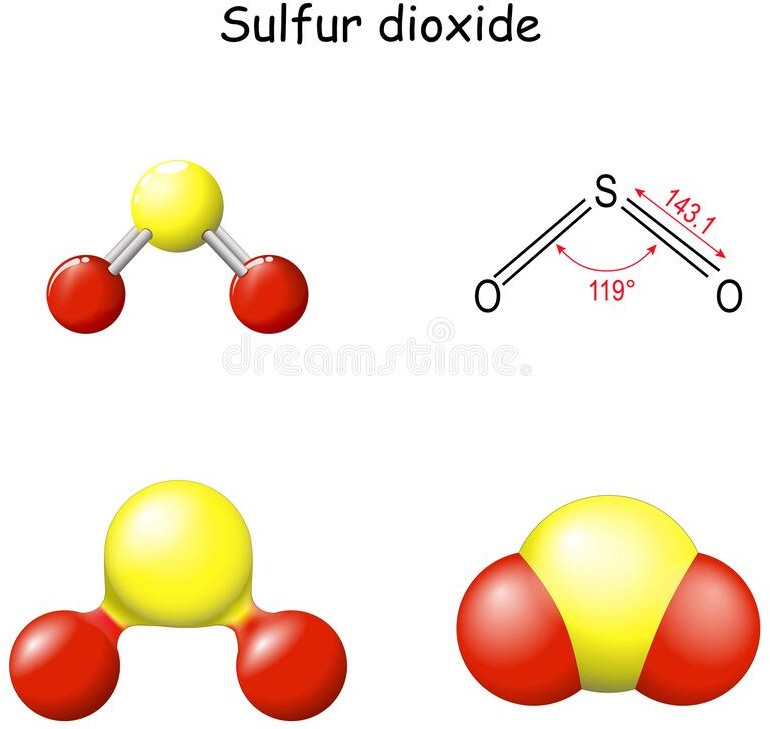 |
Correct Answer is C
Explanation
Down syndrome is a genetic disorder caused by the presence of an extra copy of chromosome 21. It is also known as trisomy 21, because affected individuals have three copies of chromosome 21 instead of the normal two.
The extra chromosome 21 in Down syndrome occurs due to a random error in cell division, which leads to the production of an abnormal gamete (egg or sperm) with an extra copy of the chromosome. When this gamete fuses with a normal gamete during fertilization, the resulting zygote has 47 chromosomes instead of the usual 46, and develops into a fetus with Down syndrome.
Down syndrome is characterized by a range of physical and intellectual symptoms, including developmental delays, intellectual disability, distinctive facial features, heart defects, and increased risk of certain medical conditions such as leukemia and Alzheimer's disease. However, the severity and expression of these symptoms can vary widely among affected individuals.
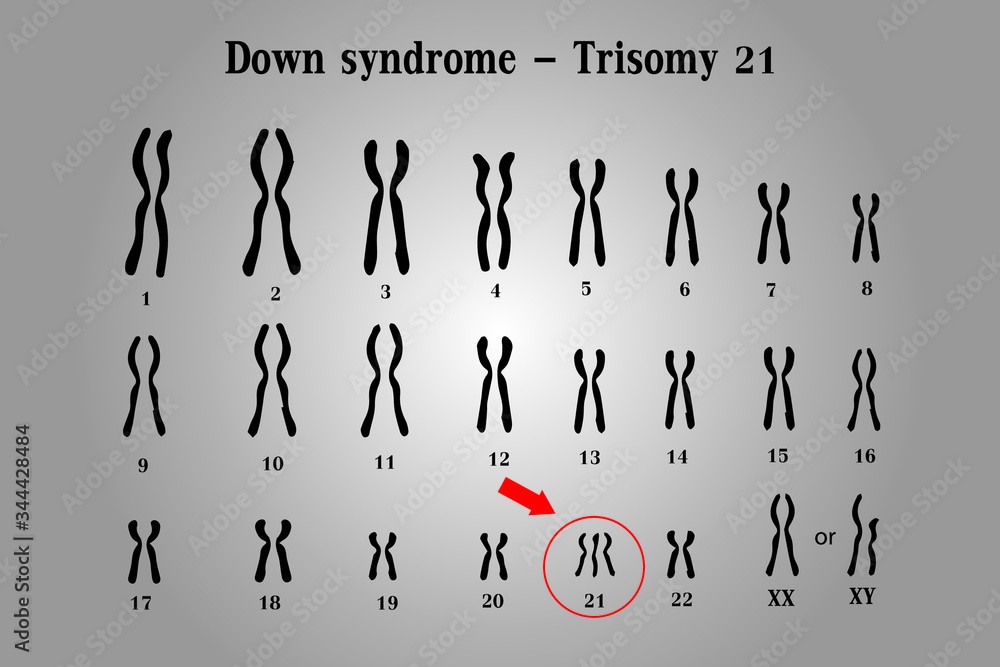 |
Correct Answer is B
Explanation
Chronotropic agents influence the heart rate. These agents can either increase (positive chronotropic) or decrease (negative chronotropic) the rate at which the heart beats.
- Positive chronotropic agents (like adrenaline) increase the heart rate by speeding up the electrical impulses through the heart.
- Negative chronotropic agents (like beta-blockers) slow down the heart rate by reducing these impulses.
Chronotropic agents specifically affect heart rate, not other cardiovascular functions like blood viscosity, contraction strength (influenced by inotropic agents), or vessel elasticity.
The other options are incorrect because:
- A. Blood thickness (viscosity): This is not typically affected by chronotropic agents.
- C. Contraction strength: This is influenced by inotropic agents, not chronotropic agents.
- D. Vessel elasticity: Chronotropic agents affect heart rate, not the elasticity of blood vessels.
The key term is "chronotropic," which relates specifically to heart rate control.
Correct Answer is A
Explanation
The renal vein is responsible for draining oxygen-depleted blood from the kidneys and carrying it back to the heart through the inferior vena cava.
The other options refer to different structures:
- B. Renal Artery: Brings oxygenated blood to the kidneys, not draining it.
- C. Urethra: Transports urine from the bladder to the outside of the body, not involved in blood flow.
- D. Ureter: Carries urine from the kidneys to the bladder, also not related to blood drainage.
Correct Answer is D
Explanation
The largest organ in the human body by surface area is the skin. It covers the entire external surface of the body and has an average surface area of about 20 square feet in adults.
 |
Correct Answer is C
Explanation
Transfer RNA (tRNA) is a type of RNA molecule that carries amino acids to the ribosome during protein synthesis. Each tRNA molecule has a specific sequence of three nucleotides called an anticodon, which pairs with a complementary codon in the messenger RNA (mRNA) sequence. Each tRNA also carries a specific amino acid that corresponds to the codon it recognizes, allowing the ribosome to link the amino acids together in the correct order to form a protein.
In contrast, messenger RNA (mRNA) carries the genetic information from the DNA to the ribosome, where it serves as a template for protein synthesis. Ribosomal RNA (rRNA) is a component of the ribosome itself, where it helps to catalyze the formation of peptide bonds between amino acids. Small nuclear RNA (snRNA) is involved in splicing of pre-mRNA molecules during post-transcriptional processing.
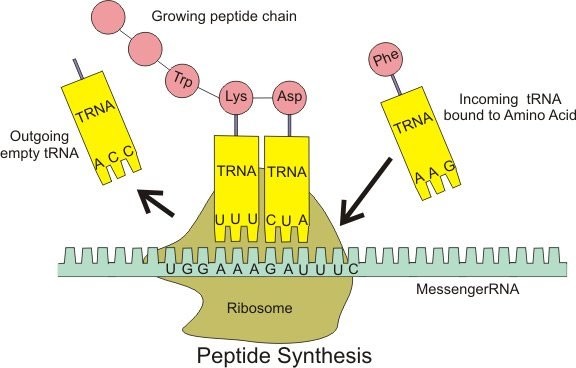 |
Correct Answer is C
Explanation
Diaphragm is responsible for regulating breathing rate and depth. It is a dome-shaped muscle located at the
bottom of the chest cavity that contracts and relaxes to help move air in and out of the lungs.
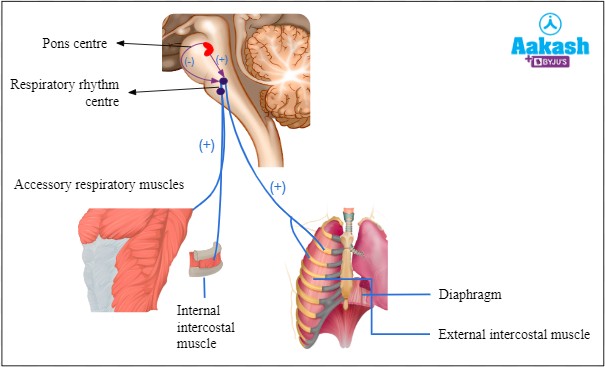 |
Correct Answer is D
Explanation
A double-blind study is a research design in which neither the participants nor the researchers know which group participants are assigned to. This is done to minimize bias and ensure that the results of the study are as objective as possible. In a double-blind study, the treatment and control groups are randomly assigned, and the participants and researchers are unaware of which group each participant is assigned to. Option a) is an example of a randomized controlled trial, which is a common research design, but it is not necessarily double-blind. Option b) is an example of an open-label study, in which both the participants and the researchers know which group each participant is assigned to. Option c) is an example of a single-blind study, in which the participants do not know which group they are assigned to, but the researchers do.
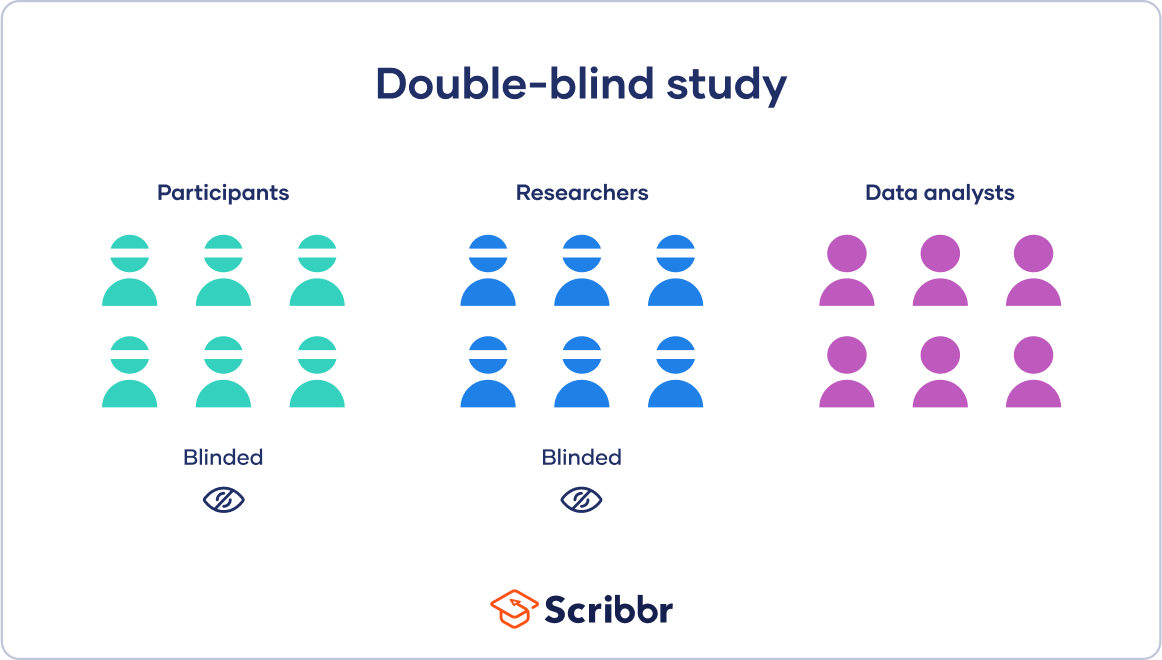
Correct Answer is A
Explanation
Insulin is a hormone produced by the pancreas that plays a crucial role in regulating the levels of glucose (sugar) in the blood. After a person eats a meal, the levels of glucose in the blood rise, which stimulates the pancreas to release insulin into the bloodstream. Insulin acts on various cells in the body, particularly those in the liver, muscles, and adipose tissue, to promote the uptake, use, and storage of glucose.
Insulin helps to lower the levels of glucose in the blood by increasing the uptake of glucose by cells, stimulating the liver and muscle cells to store glucose in the form of glycogen, and inhibiting the production and release of glucose by the liver. This process is known as glucose homeostasis, and it helps to keep the levels of glucose in the blood within a normal range.
Deficiencies or abnormalities in insulin production or function can lead to a range of metabolic disorders, including type 1 and type 2 diabetes. In type 1 diabetes, the body does not produce enough insulin, while in type 2 diabetes, the body becomes resistant to the effects of insulin, leading to elevated levels of glucose in the blood.
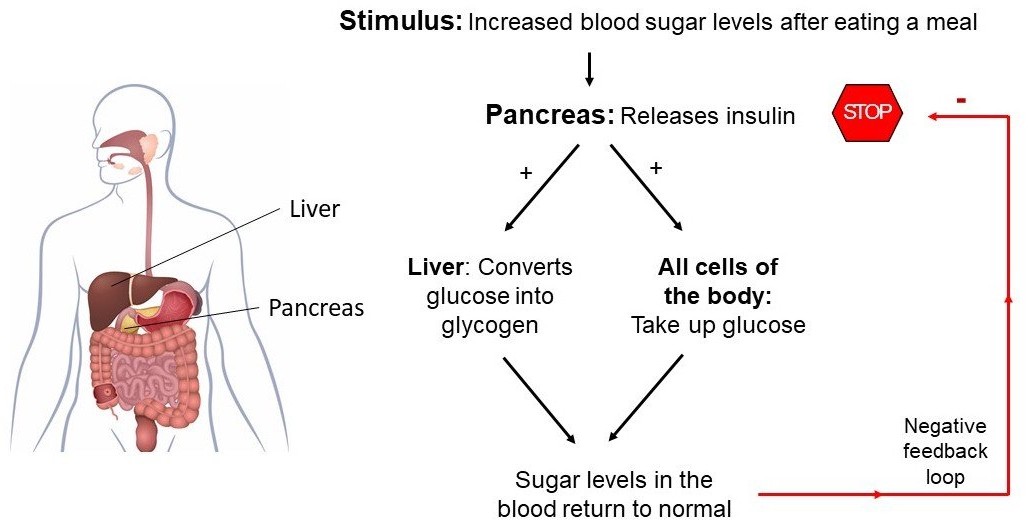
This question was extracted from the actual TEAS Exam. Ace your TEAS exam with the actual TEAS 7 questions, Start your journey with us today
Visit Naxlex, the Most Trusted TEAS TEST Platform With Guaranteed Pass of 90%.
Money back guarantee if you use our service and fail the actual exam. Option of personalised live tutor on your area of weakness.
